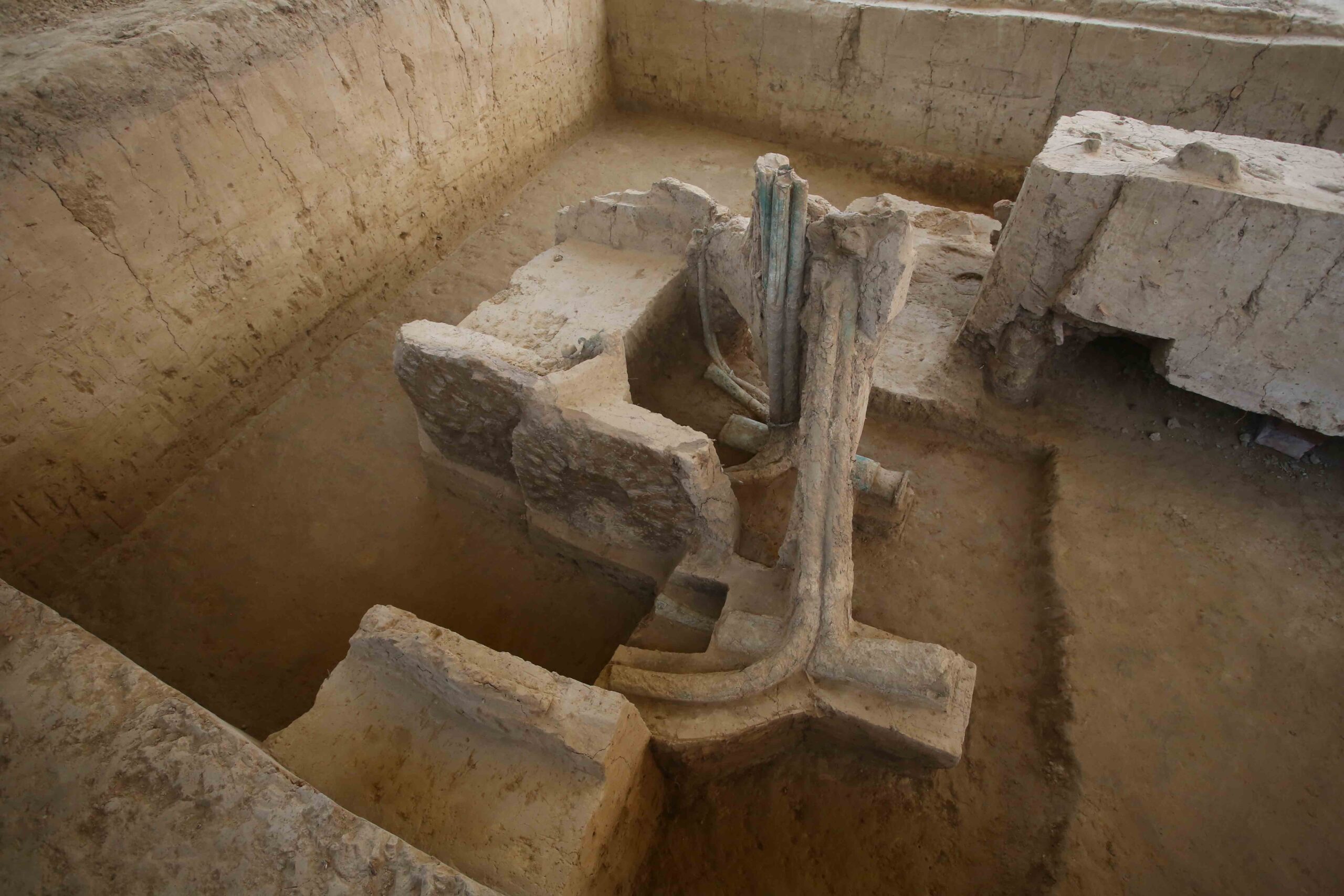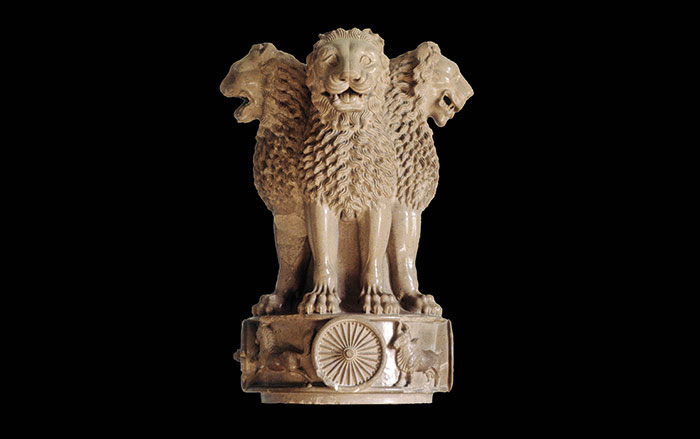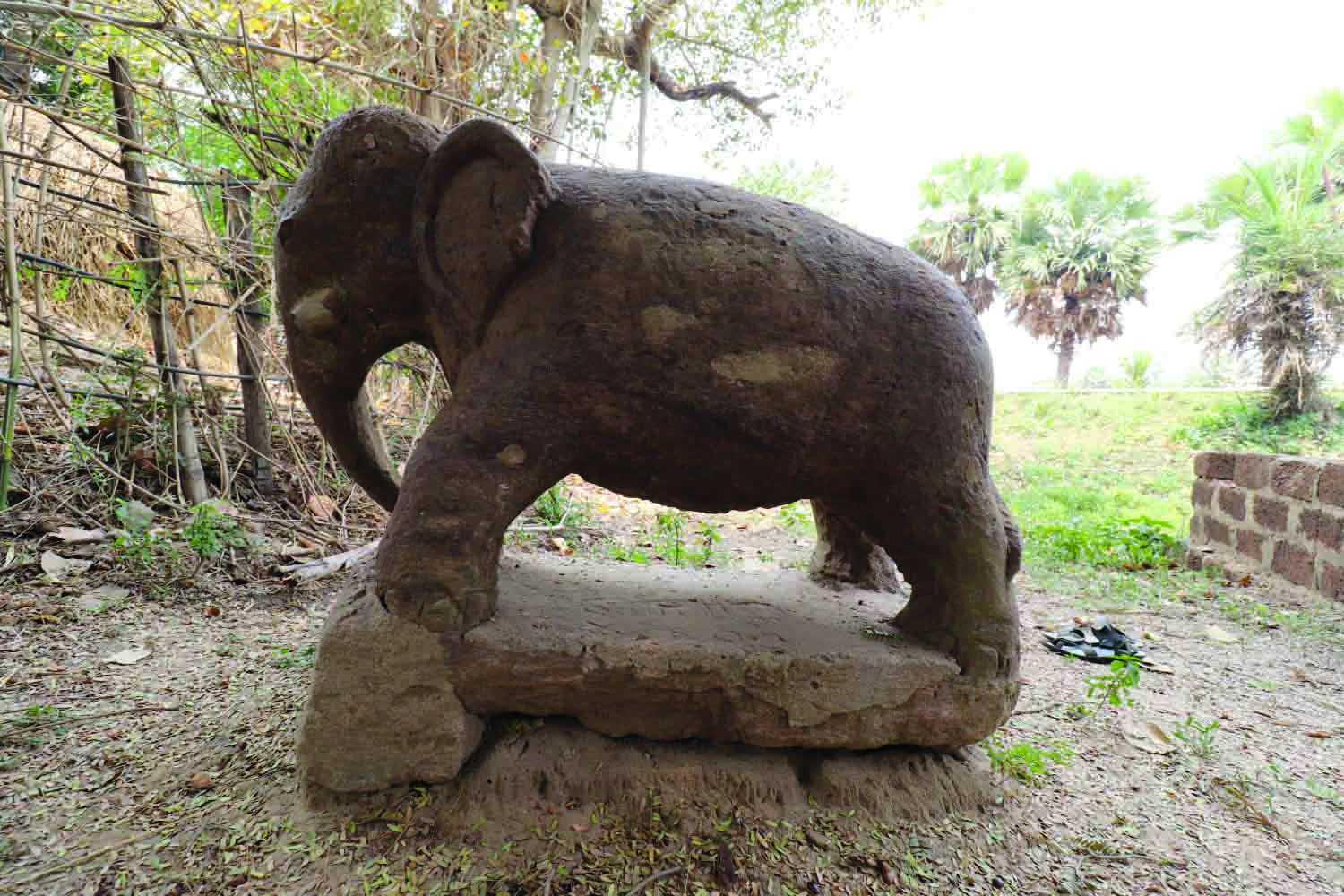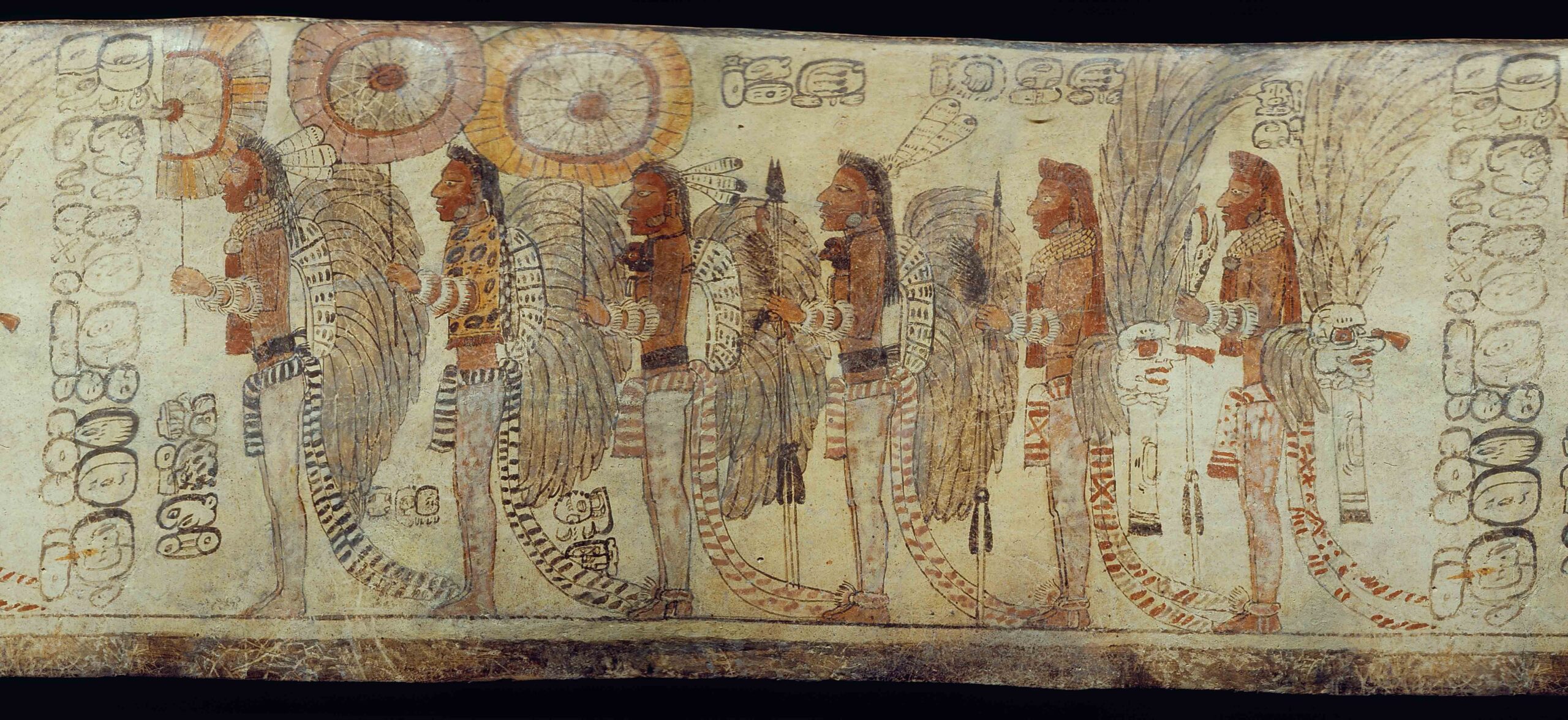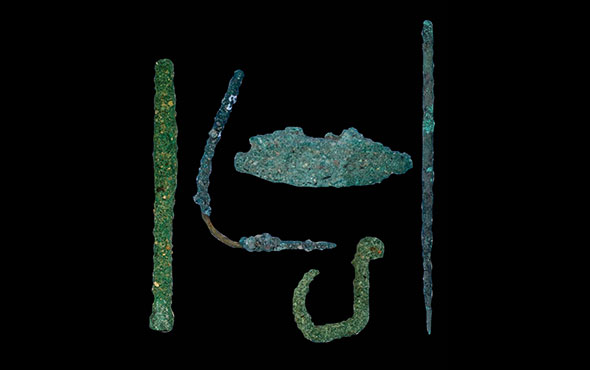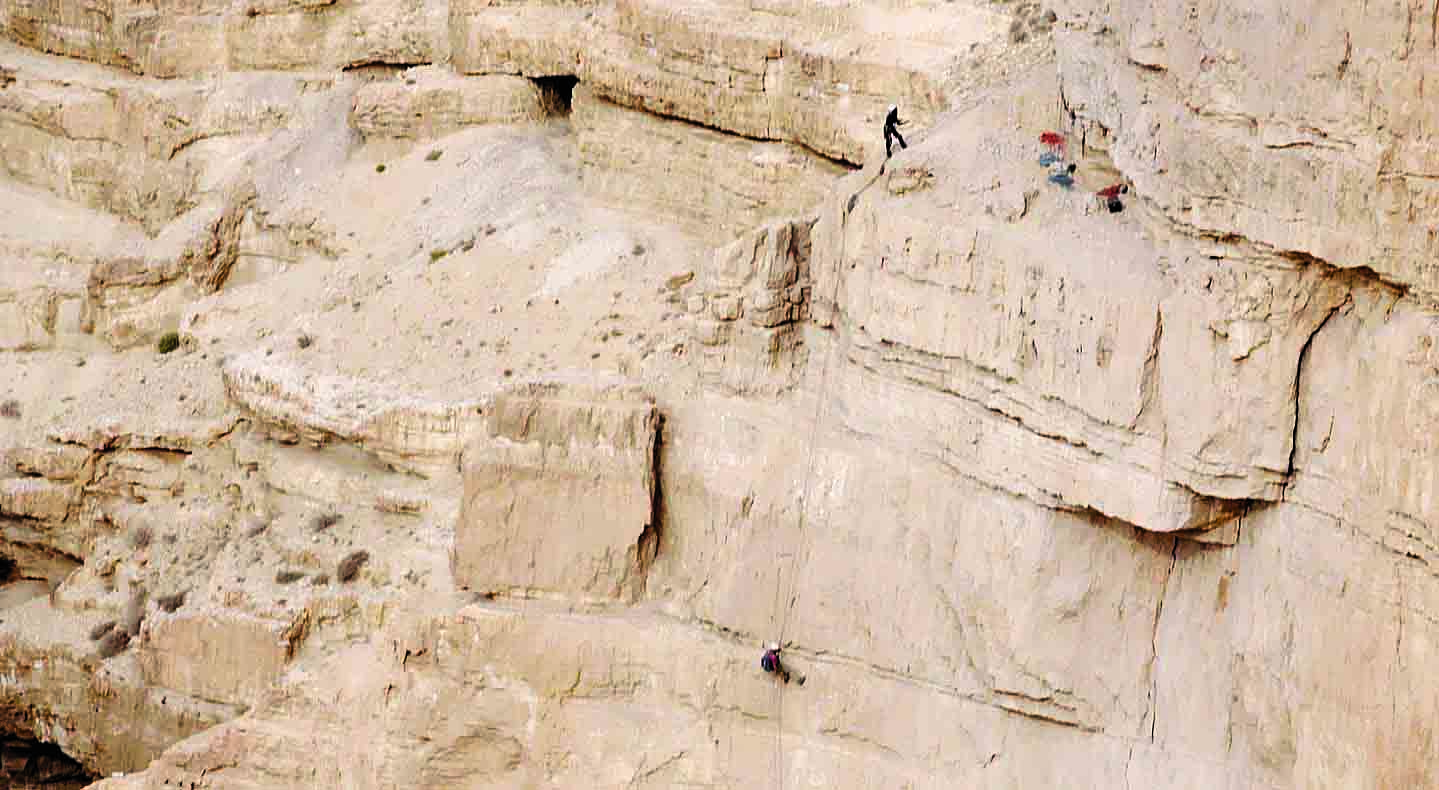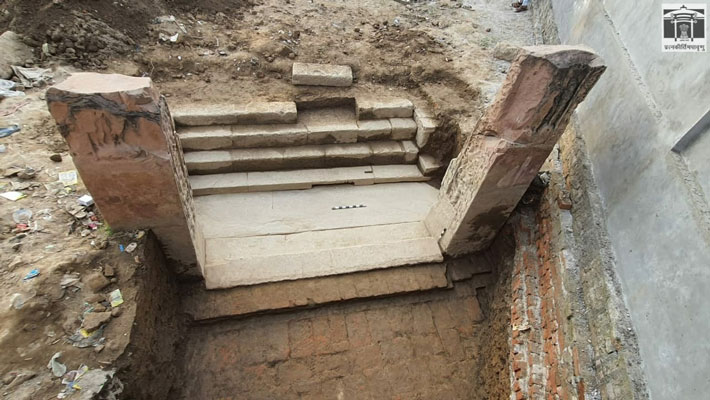
UTTAR PRADESH, INDIA—The Times of India reports that researchers from the Archaeological Survey of India discovered two decorated pillars and a staircase at a temple site in northern India’s Bilsarh village during routine cleanup after the monsoon season. The title “Sri Mahendraditya,” which refers to the fifth-century A.D. Gupta ruler Kumaragupta I, was found in Shankhalipi, or shell script, on the staircase. The ornate script was used between the fourth and eighth centuries A.D. for names and signatures, according to archaeologist Vasant Swarnkar. The same inscription has also been found on a horse statue unearthed further to the east, near the border with Nepal. “The Guptas were the first to build structural temples for Brahminical, Buddhist, and Jain followers,” explained Manvendra Pundhir of Aligarh Muslim University. “Prior to that, only rock-cut temples were built.” This is only the third Gupta temple to be found. To read about a 2,000-year-old temple complex on Srirangam, go to "India's Temple Island."


